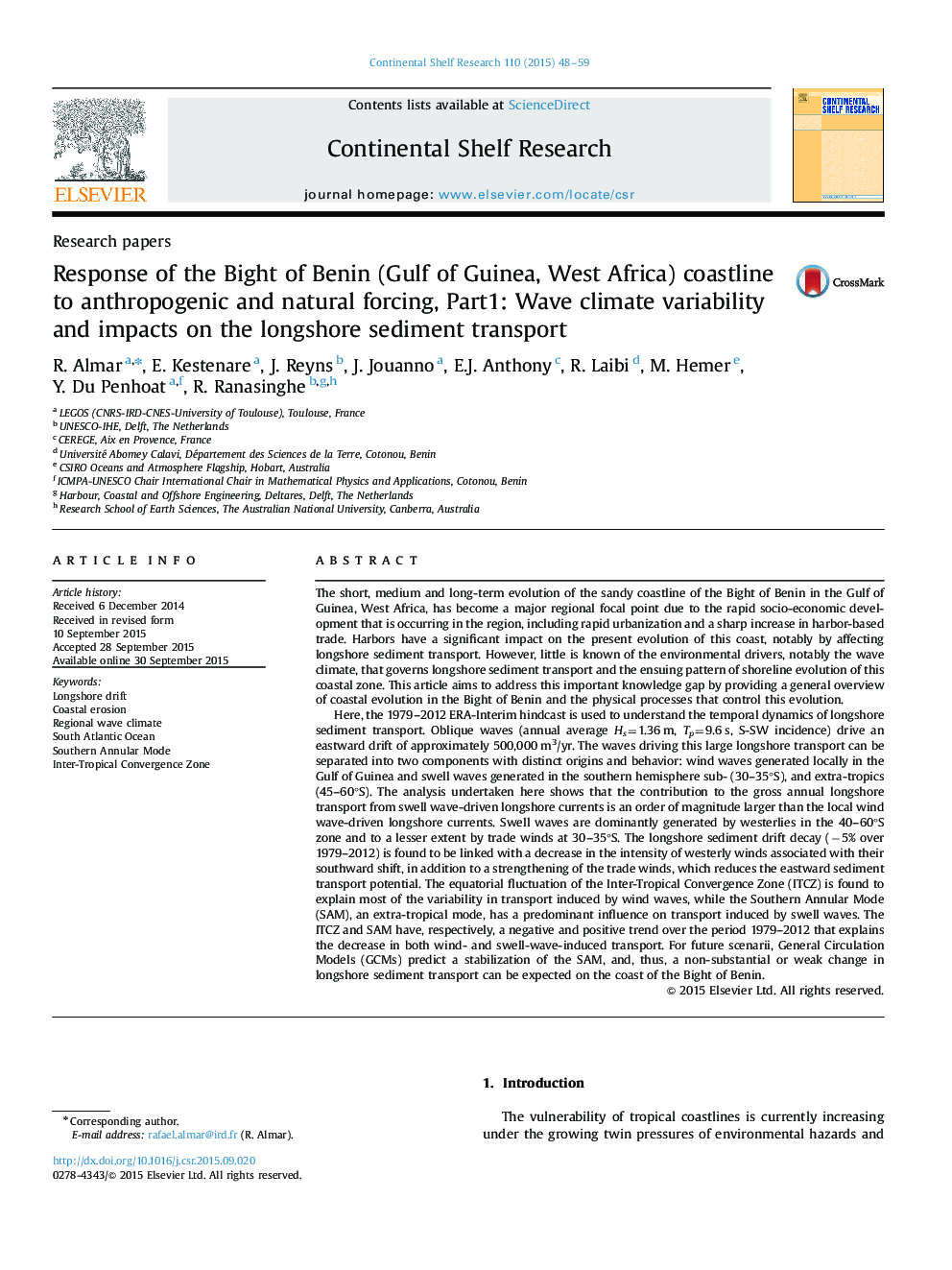| Article ID | Journal | Published Year | Pages | File Type |
|---|---|---|---|---|
| 6382973 | Continental Shelf Research | 2015 | 12 Pages |
Abstract
Here, the 1979-2012 ERA-Interim hindcast is used to understand the temporal dynamics of longshore sediment transport. Oblique waves (annual average Hs=1.36 m, Tp=9.6 s, S-SW incidence) drive an eastward drift of approximately 500,000 m3/yr. The waves driving this large longshore transport can be separated into two components with distinct origins and behavior: wind waves generated locally in the Gulf of Guinea and swell waves generated in the southern hemisphere sub- (30-35°S), and extra-tropics (45-60°S). The analysis undertaken here shows that the contribution to the gross annual longshore transport from swell wave-driven longshore currents is an order of magnitude larger than the local wind wave-driven longshore currents. Swell waves are dominantly generated by westerlies in the 40-60°S zone and to a lesser extent by trade winds at 30-35°S. The longshore sediment drift decay (â5% over 1979-2012) is found to be linked with a decrease in the intensity of westerly winds associated with their southward shift, in addition to a strengthening of the trade winds, which reduces the eastward sediment transport potential. The equatorial fluctuation of the Inter-Tropical Convergence Zone (ITCZ) is found to explain most of the variability in transport induced by wind waves, while the Southern Annular Mode (SAM), an extra-tropical mode, has a predominant influence on transport induced by swell waves. The ITCZ and SAM have, respectively, a negative and positive trend over the period 1979-2012 that explains the decrease in both wind- and swell-wave-induced transport. For future scenarii, General Circulation Models (GCMs) predict a stabilization of the SAM, and, thus, a non-substantial or weak change in longshore sediment transport can be expected on the coast of the Bight of Benin.
Keywords
Related Topics
Physical Sciences and Engineering
Earth and Planetary Sciences
Geology
Authors
R. Almar, E. Kestenare, J. Reyns, J. Jouanno, E.J. Anthony, R. Laibi, M. Hemer, Y. Du Penhoat, R. Ranasinghe,
